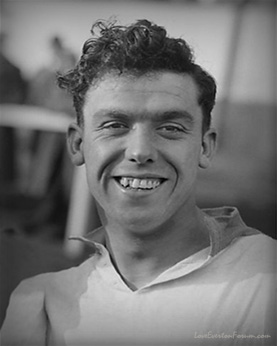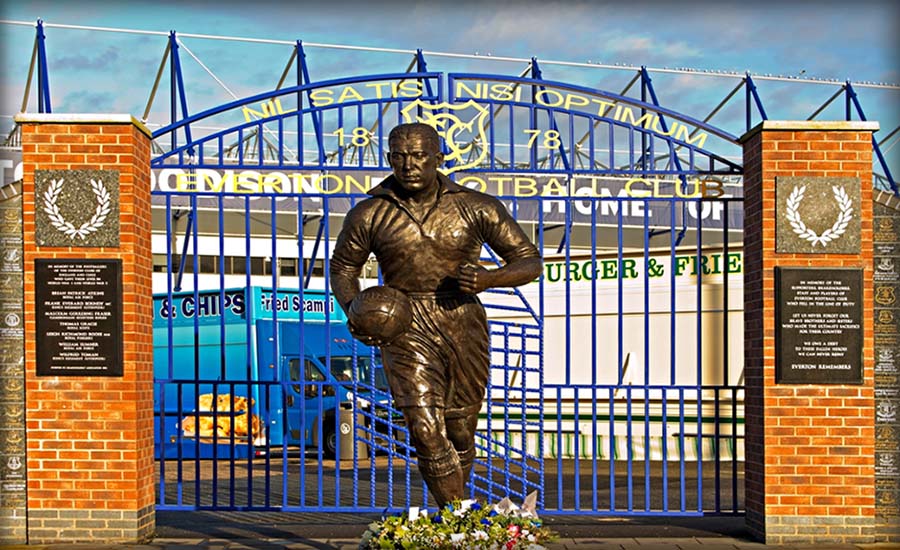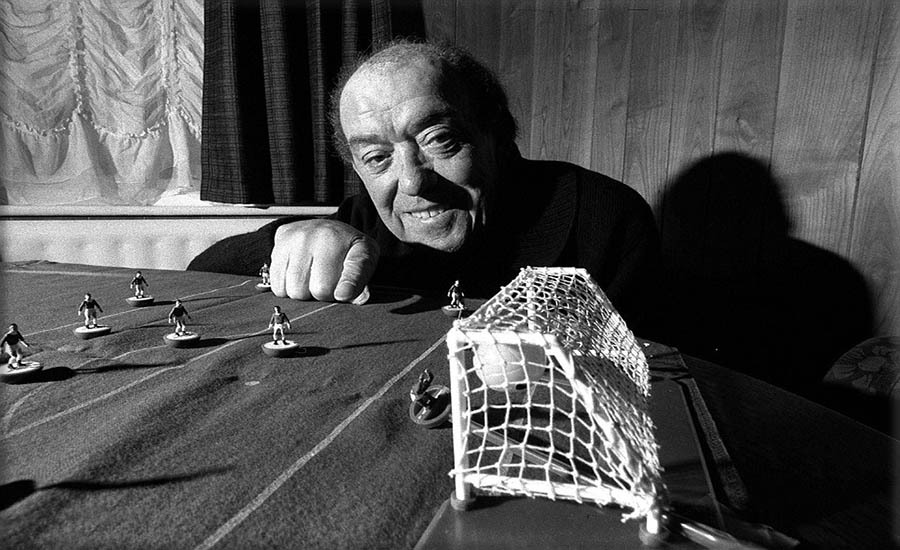William Ralf 'Dixie' Dean

- Born: 22/01/1907
- Died: 01/03/1980
- Birthplace: Birkenhead
- Nationality: English



At Everton between 1925 - 1937
William Ralph Dean, is recognised by many as Everton FC's greatest ever player, and arguably the most prolific striker the English game has ever seen.
He grew up an Everton fan after his father William took him to his first Everton match at 8 years of age, during the 1914 - 1915 season, a season which saw Everton become league champions before World War 1 interrupted the football calendar.
It's unclear where the nickname 'Dixie' originated from, and it's suggested Dean didn't particularly appreciate it and preferred to be called Bill, although his grandaughter Melanie claims it was more the family that called him Bill, and he signed autographs as Dixie.
Some say his dark hair and complexion was likened to the black slaves of the American southern states, while others claim it was from a childhood song. Dean's Godmother, apparently claimed that it was a take on his childhood nickname, Digsy, for giving people a 'dig' in a game of tag, but nobody will ever know for sure.
Dean initially played for Tranmere, and had lost a testicle after a bad challenge in a match against Rochdale meant a trip to the hospital, but his dream of playing for Everton came true in March 1925 shortly after his 18th birthday.
Everton secretary Tom McIntosh had attempted to visit him at home, but Dean wasn't in, and after being told by his mother of the interest, he ran several miles to meet Mr McIntosh at the Woodside Hotel where he discussed terms, and switched teams for a fee of £3000 which was quite a sum of money at the time.
He had to wait for his opportunity at Everton, and after performing well in the reserves (he scored 7 goals in one game) eventually made his debut in an away defeat to Arsenal on Saturday 21st March 1925, and scored his first goal the following weekend in a 2-0 win over Aston Villa.
In the following 1925-1926 season, (his first full season) Dean would go on to score 33 goals, involving 4 hat-tricks and an FA Cup goal.
Then came near tragedy
In June 1926, Dean had taken his girlfriend on a motorcycle ride in North Wales, when they were involved in a collision. Dean suffered extensive injuries, and was told he would never play football again.
Despite a broken jaw, and metal plates in his head (later removed) to repair a fractured skull, he defied the odds, and returned to Everton, scoring a goal in a 3-1 win over Leeds on Saturday 23rd October 1926. He went on to score 24 goals during the campaign.
The legendary season
During the 1927-28 campaign, in which Everton went on to be crowned Football League Division 1 champions, William Ralph Dean scored a staggering 60 league goals, accompanied by 3 FA Cup goals. He even added 4 England goals to his tally for good measure.
The record for league goals had been set the season prior, when during Middlesbrough's promotion campaign, George Camsell had netter 59 times.
Dean broke Camsell's record on the final day of the season, scoring a hat-trick in a 3-3 draw at home to Arsenal. Having opened the scoring in the 3rd minute, and then converting a penalty in the 6th minute, Dean waited until the 82nd minute of the game, to head the ball in the Arsenal net off an Alec Troupe corner kick; ironically Boro were relegated.
Everton's own relegation was on the horizon
Dean scored 28 goals from 31 appearances in season 1928-29, then the following campaign, the unthinkable happened. Everton finished the 1929-30 season in last place, despite another 23 Dean league goals, and were relegated to Division 2.
They won Division 1 at the first attempt in 1930-31 with Dean scoring 48 goals (39 in the league) and were promoted back to the top level, narrowly losing to West Brom 1-0 in the FA Cup Semi Final. During this season, Dean notched up his 200th Everton goal in only 198 appearances so far. In February 1931 he was made a Freemason by Randle Holme Lodge in Birkenhead.
Champions again
Everton were crowned Division 1 champions yet again in 1931-32 with Dean scoring 45 league goals and 1 FA Cup goal.
The following year, Everton were FA Cup winners, with Dean scoring his 5th goal of the competition in a 3-0 final victory over Manchester City. He also scored 4 goals in a 4-3 Charity Shield victory over Newcastle United, and his league tally for the 1932-1933 season was 24.
The number 9 jersey
Dean was the first ever English player to wear the coveted number 9. The 1932-1933 FA Cup final was the first English football game to use numbered shirts. However, it wasn't in the blue shirt of Everton, but in a white shirt. Because both Everton and Manchester City played in blue, 2 kits were provided. A red kit and a white kit. Needless to say, Dean and his players were not prepared to play in red, and so they took the white option. The numbers 1 to 22 were spread across both teams, with captain Dean getting the 9 shirt. It was the 2nd time Everton had won the FA Cup, the 1st being in 1906.
1933-1934 saw injury for Dean, and he made just 12 league appearances scoring 9 goals, and reaching his 300th Everton goal, before bone fragments were removed from his left ankle.
Dean returned for the 1934-1935 season and scored 26 goals in 38 appearances as Everton finished 8th. He would go on to score 17 more in 1935-1936, and 27 goals, including 3 FA Cup goals in 1936-1937.
Dean would fall short of 400 Everton appearances by 1 game, after losing his place to the younger Tommy Lawton, clocking his 399th and final game for the club at Goodison Park against Birmingham City on Saturday 11th December 1937.
He left Everton in March 1938 to join Notts County, playing a single season, blighted with injury, before moving on to Sligo Rovers aged 32, and finished his career with a few games at Hurst (Now called Ashton United).
Post football
He returned to his family in Birkenhead just before the war, before joining the King's Regiment in 1940. After the war, he was landlord of a Chester public house called the Dublin Packet, and later worked in security at Littlewoods, owned by John Moores who would go on to be Chairman of Everton.
In November 1976, he had his right leg amputated due to a blood clot, only 2 years after losing his wife. His own health was in decline, and on March 1st 1980, aged 73, after watching the Merseyside Derby at Goodison Park, William Ralph 'Dixie' Dean suffered a heart attack minutes after the final whistle. He will be remembered by those who knew or saw him as one of the greatest goalscorers to ever grace our game, and in the eyes of Evertonians, there is no other.
A bronze statue of the him resides at Goodison Park to this day, and his ashes are scattered on the half way line.




